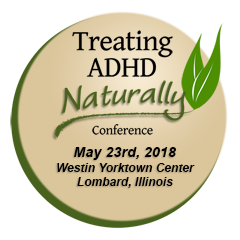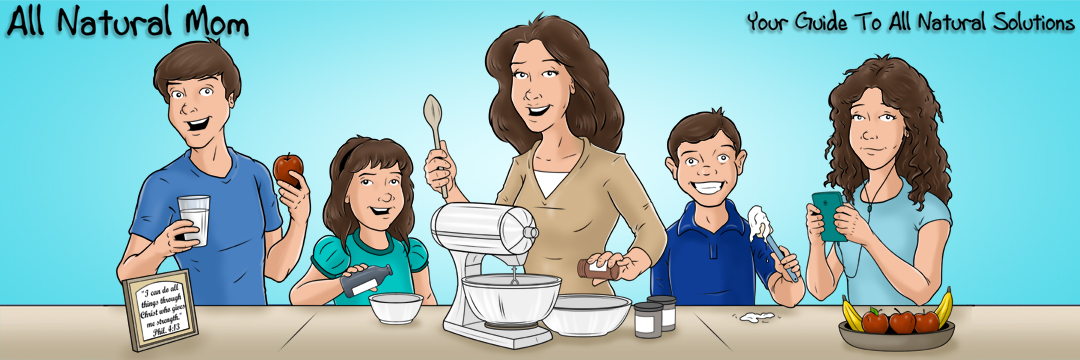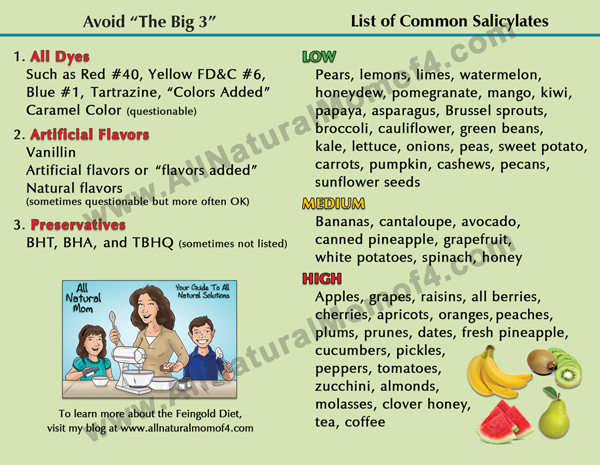below…
Sensitivity
affecting all areas of life all the time (not ADD).
emotional problems, hours-long tantrums, inconsolable crying, paranoia, and
meltdowns over tiny things or schedule changes.
disruptive, interrupts people a lot, hard to transition from one activity to another, does not adjust behavior in response to discipline.
sugary treats without problems some days, but then other times, they freak out? Our clue was our daughter’s hyperactivity after eating sugar-free pudding that we later discovered had red dye.
vomiting for Kid C. Some kids can tolerate blue and yellow dyes without
symptoms, but react fiercely to red dyes. More complicated still is the
fact that most petroleum food dyes don’t exist alone in any given food.
They are mixed with other colors, plus petroleum-derived preservatives
like Sodium Benzoate, BHT, BHA, and TBHQ. Much more research is needed on
how the consumption of several dyes and preservatives affects the human body
over a lifetime.
severely dairy-allergic babies. Some parents note that the once
life-threatening anaphylactic symptoms of babyhood have seemingly morphed into
behavioral problems after they thought their child had outgrown a dairy
allergy.
from spoiling by the use of petroleum-based preservatives – which do not have to be listed on the ingredient
label. My own dye-sensitive kid had abrupt and scary allergic reactions
to milk as a baby. This theory fascinates me, and I’d love to learn more.
whether we realize it or not. I can totally see that, and it helps me to
be more understanding of myself and others. It’s my own opinion that
petroleum dyes exacerbate those issues, such as with picky eaters, and those
who are sensitive to loud noises and bright lights.
least try avoiding synthetic food coloring. I’ve even found theories connecting yellow dyes to carpal tunnel syndrome and arthritic symptoms.
adults weren’t meant to digest them, and developing kids are especially
ill-equipped to deal with them. Unfortunately, most dyed foods are marketed
to kids.
within just a few days.
3. Remove dyes that are hidden in your home such as in cleaning and personal care products.See the post, “Places Petroleum Food Dyes Hide In Your Home.”
dyes during your elimination test. Ask family, teachers, friends, and caregivers
to refrain from offering food and drinks that are not provided by you.See the post, “Revamp Your Pantry in 3 Easy Steps – Ditch the Food Coloring For Good.”
too.
My daughter gets the inconsolable Screaming Weepies for several hours
after eating fake vanilla in dips, cereals, cookies, sauces, cheap chocolate, and
drinks.
your child is in daycare or school, compare your Food Mood Log with the
caregiver’s notes or behavior charts. Try to spot any patterns. Rule out other allergies with an allergist if there is no change after a
dye elimination.
comment below!
antibiotics, allergy and cold medications, pain and fever reducers, vitamins,
and toothpastes.
Rebecca is a homeschooling mom of one precocious, dye-sensitive child. She launched “Die, Food Dye!” in 2011 after uncovering her and her child’s reactions to petroleum-based “food” coloring. She and her daughter both train in Taekwondo, where Rebecca has just joined the leadership program. She likes art, music, British comedies, history, the outdoors, knitting, photography, and large amounts of (organic) chocolate.
Thanks so much for sharing Rebecca!
Sheri Davis
All Natural Mom
Written by Sheri Fortes - Visit Website
Author of "All Natural Mom's Guide to the Feingold Diet"
Follow me on Facebook, Pinterest, and Instagram
The Treating ADHD Naturally Conference is coming back to Chicago May 23, 2018! More details coming soon at www.mothersdetermined.com.






This artical is very informative. But I was wondering why can’t you just.give your kid 2 or 3 drops of the coloring or flavoring at.home then evaluate their reaction? You can get fake flavors and patrolium based colorings and preservatives quite easly. then you can know exactly which one it is that’s the problem.